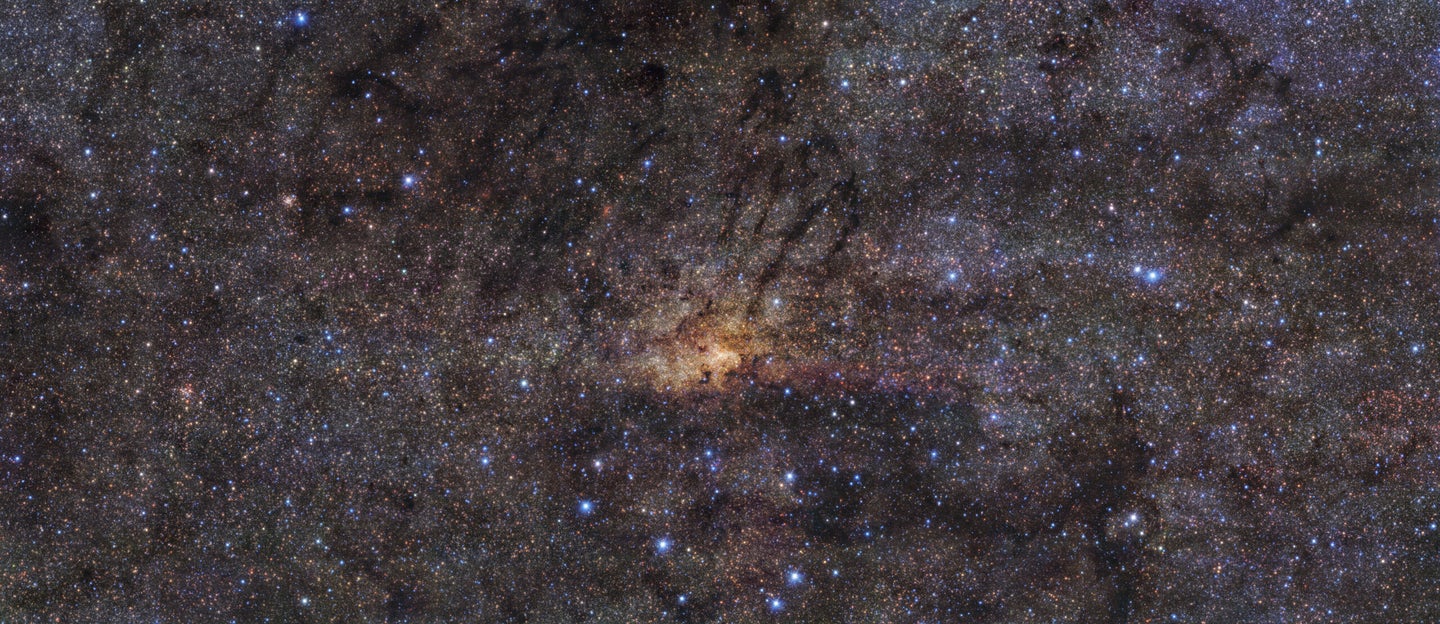There’s an ancient starburst in the heart of the Milky Way
A stunning new image hints at our galaxy’s tumultuous past.

By peering into the center of the Milky Way, astronomers have revealed new evidence of how stars in our galaxy were born—and it seems like things went down much more dramatically than we thought.
Researchers used the European Southern Observatory’s Very Large Telescope (VLT) in Chile’s Atacama Desert to capture the section of sky pictured above, which has a simply flabbergasting amount of detail. Imaging stars with such precision is the equivalent of spotting a soccer ball in Zurich while standing 150 miles away in Munich, according to an ESO press release.
To get such detail, astronomers used the VLT’s HAWK-I instrument, which detects near-infrared light at varying wavelengths in order to see what lies beyond dense clouds of gas and dust. The resultant image was first published in Astronomy & Astrophysics in October of this year, but a new analysis of the dazzling Milky Way snapshot appeared this week in Nature Astronomy. In that analysis, a team of astronomers from Spain, the U.S., Japan, and Germany agree that the image reveals crucial information on how stars populated the Milky Way’s center billions and billions of years ago.
“Our unprecedented survey of a large part of the Galactic centre has given us detailed insights into the formation process of stars in this region of the Milky Way,” Rainer Schödel from the Institute of Astrophysics of Andalusia in Granada, Spain, said in a press release.
As detailed in their study, the team found that 80% of stars in this region formed when the galaxy was in its infancy, between 8 and 13.5 billion years ago. The following six billion years were quiet on the star-formation front. But then, suddenly, there was an intense bout of star formation once again. “Contrary to what had been accepted up to now, we found that the formation of stars has not been continuous,” Francisco Nogueras-Lara, another study-author, said in the same release.
This kind of behavior strongly resembles that of a starburst galaxy, like Messier 82 (also known as the Cigar Galaxy) or the Baby Boom Galaxy, in which the equivalent of 100 suns are born every year. Stars born in these situations are more massive than your typical star, and thus die more quickly, resulting in a vast number of violent supernova explosions.
Today, our galaxy only creates the equivalent of one or two suns a year. But way back when, the Milky Way might have behaved like a starburst. According to Nogueras-Lara, “this burst of activity, which must have resulted in the explosion of more than a hundred thousand supernovae, was probably one of the most energetic events in the whole history of the Milky Way.”